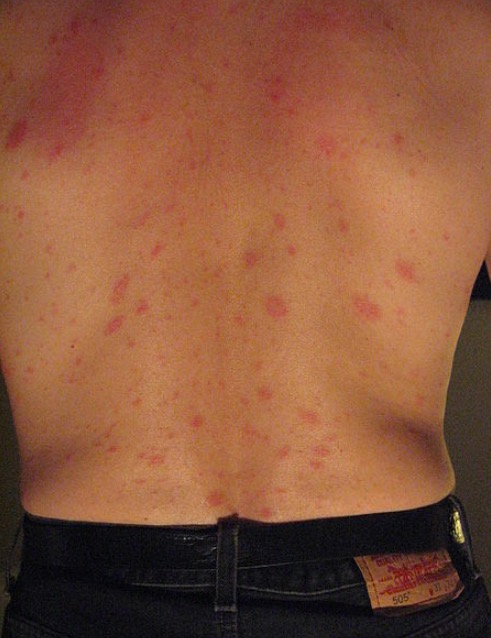Playlist
Show Playlist
Hide Playlist
Pityriasis Rosea
-
Slides Fungal Skin Infections.pdf
-
Reference List Dermatology.pdf
-
Download Lecture Overview
00:01 Let's talk about pityriasis rosea first. 00:05 First off, even though we're talking about the fungal infections of the skin conversation, it turns out that this is not a fungal infection. 00:13 In fact, pityriasis rosea is completely idiopathic, we don't know exactly what causes it. 00:19 It is self-limited, it's gonna go away on its own. 00:22 It's pruritic and you'll have oval maculopapules that are distributed over the chest or back in a so-called 'christmas tree' pattern. 00:31 It's kind of illustrated here on the right. 00:33 These are scaly, maculopapules as well. 00:36 Now I mentioned it's idiopathic but it is postulated that there might be some sort of viral etiology for this condition that just hasn't been identified yet particularly since it seems to often be associated with some nonspecific viral URI symptoms The jury is still out on that one. 00:53 And secondly, while this may not look much like what our patient has, it is important to note that patients with this condition often present with a single solitary 'herald patch' like this one, it's about 2-6 cm in size described with central clearing, a colorative scale, kinda looks familiar to what our patient has, right? Of note, for the majority of the times, the herald patch appears somewhere else on the body like on the chest, or the back. 01:21 But in this case of this picture, it's appearing on the ankle. 01:26 Importantly, as this disease is self-limited, there typically is no treatment. 01:32 Patients should be advised however the rash could persist up to 2 or 3 months. 01:38 Alright, I think we'll leave pityriasis rosea on our list, knowing that that herald's patch could be similar to what our patient is experiencing.
About the Lecture
The lecture Pityriasis Rosea by Stephen Holt, MD, MS is from the course Skin Infections.
Included Quiz Questions
Which of the following statements is true regarding pityriasis rosea?
- It presents as scaly, maculopapular skin lesions.
- Topical fluconazole is the treatment of choice.
- Candida albicans is the causative microorganism.
- A herald patch usually appears on palms and soles.
- Vomiting and diarrhea usually precede cutaneous eruptions.
Customer reviews
5,0 of 5 stars
| 5 Stars |
|
5 |
| 4 Stars |
|
0 |
| 3 Stars |
|
0 |
| 2 Stars |
|
0 |
| 1 Star |
|
0 |




